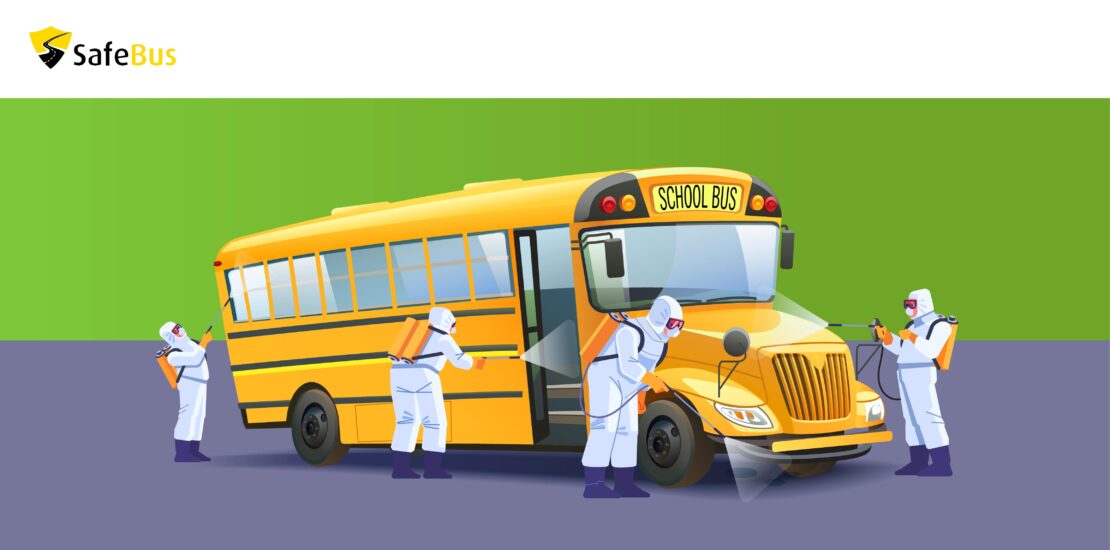- May 5, 2021
- Posted by: Satvir
- Category: Blog

In February, President Biden stated his ambitious aim to reopen schools within the first 100 days of his tenure. To understand the magnitude of the task, consider this: when he took the office in January, the US was leading the global charts for new COVID-19 cases with more than 186,000 new detections every day. Even though the number of new detections is currently hovering at the 50,000 marks and a large-scale vaccination drive is underway, a return to physical classrooms is impossible if the safety of students during daily transits cannot be ensured.
Click here to know Safety Measures for Schools & Parents during covid19
Achieving the latter requires large-scale digitization of the school fleet management value chain. Why? Because the current infrastructure managing the transportation requirements of 26 million students every year cannot fulfill the evolving needs of an increasingly digital-first world in the post-pandemic landscape.
Troubled times for the Big Yellow: The urgent need to digitize school bus fleet management
The challenges that plague manual school bus fleet management has been apparent for several years now. The dependence on human managers to plan complex routes and monitor fleet operations has led to issues such as inaccurate or inefficient routing, gaps in support, high transport costs for school administrations, in-vehicle bullying, and lack of real-time visibility for parents and admins.
The pandemic has added another dimension to this dynamic. School transport teams must also ensure that students traveling on school buses
- Practice adequate social distancing within vehicles
- Comply with COVID safety protocols, such as wearing face masks and sanitizing their hands after contact with physical surfaces.
Click here to know Homeschooling challenges
Their additional responsibilities do not end here. Transport managers must also conduct in-depth vehicle sanitization across the entire fleet before and after each trip, regularly monitor driver temperature, and manage the inventory of safety equipment – such as face masks, sanitizers, etc. – within vehicles. Routing also becomes more complicated, as transport admins must constantly track COVID-19 hotspots and update their routes, pick-ups, and drop-offs to avoid these ‘red zones.’ All of this must be accomplished, consistently and accurately, to ensure safer student transportation in the post-pandemic reality – and doing so manually is next to impossible.
Thankfully, digital school bus fleet management solutions such as SafeBus step in here to address the issues.
Digital tools for safer student transport: How technology can help the US get back to school
SafeBus uses technologies such as AI, IoT, and cloud computing to address several issues with manual fleet operations and ensure a safer transit for schoolchildren. For instance, it automates the routing and scheduling processes by integrating location analytics, geofencing, and GPS data with proprietary algorithms. It allows transport managers to create highly optimized bus routes while also giving them the flexibility to change routes based on critical, real-time information within minutes.
From a safety perspective, this means that information about COVID-19 red zones can be used to avoid pick-ups, drop-offs, and transit through these areas using geofencing. Student transport operations also become more efficient as a result, as the system brings down the average distance traveled, time taken per trip, and transport/fuel-related costs across the fleet.
Click here to know How to maximize school bus transportation security?
This digital intervention also helps in improving real-time monitoring of COVID-related compliance within the school bus. SafeBus integrates with in-vehicle cameras to provide transport managers with comprehensive visibility over their fleet, enabling them to identify and near-instantaneously address any safety breaches that might miss the scrutiny of in-vehicle staff. This improved supervision can also help in reducing untoward incidents, such as bullying and physical violence, within the school bus to further improve student safety during the commute.
SafeBus also enables automated digital checklists for vehicle sanitization, driver temperature checks, and in-vehicle inventory to make these administrative tasks simpler and easier to manage. Digital student rosters also make it possible to evaluate risk exposure in case a student is identified as COVID positive, as well as to track, contain, and mitigate the possibility of community spread.
Lastly, it ensures greater peace of mind for the parents. Real-time notifications about information such as ETA, boarding/deboarding status, etc. are automatically provided while the platform’s live tracking feature allows them to view the location of the vehicle carrying their wards. Student apps also come with a soft SOS button to raise alerts in case of an untoward incident while potential issues with driver behavior, such as over-speeding and rash driving, are constantly tracked by the system.
Click here to know the Major safety drawbacks of school bus transportation
These benefits highlight why digitalizing school bus fleet management is not just a stop-gap solution for the current crisis but a necessary evolution within the education space. By adding cutting-edge technologies such as SaaS, AI, and analytics in fleet management processes, school administrations can strengthen the entire value chain and unlock untapped value. All of this, while building a robust and agile framework for safer, swifter, and more efficient student transportation.
Sounds like a win-win situation for all.
